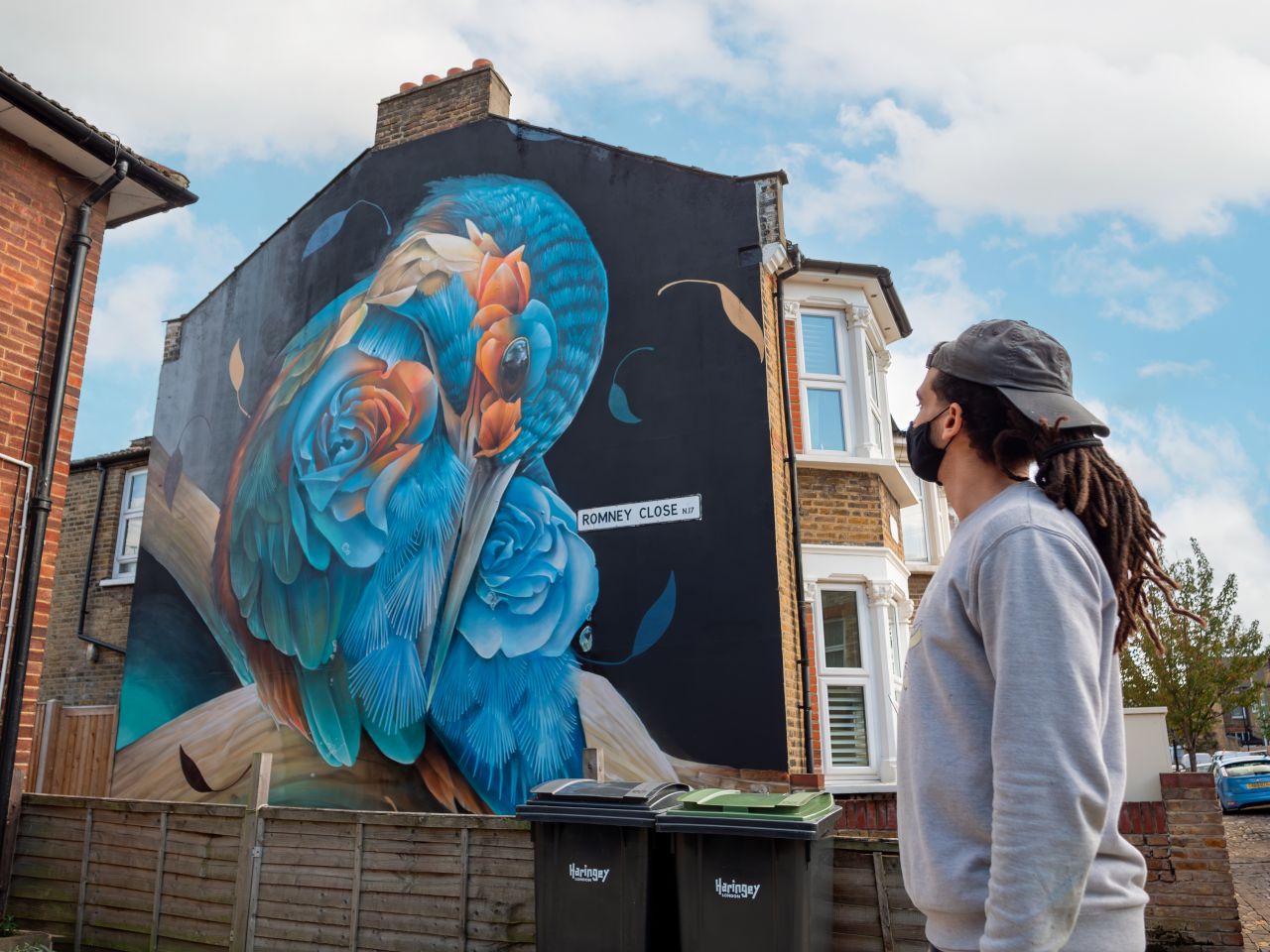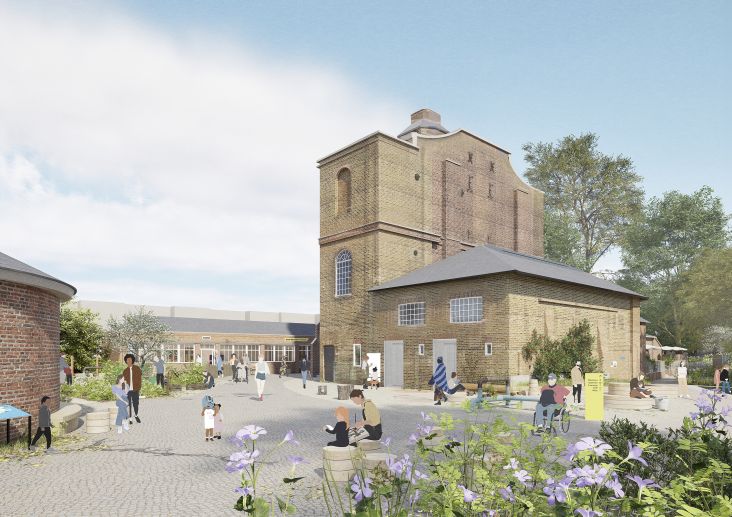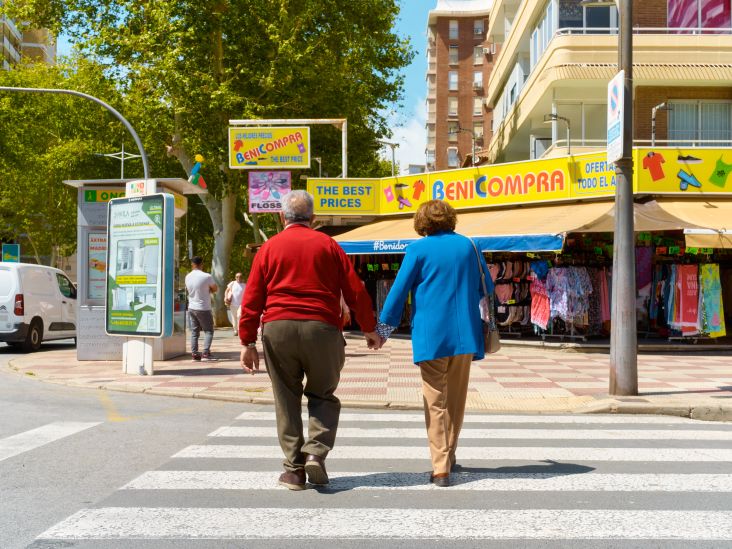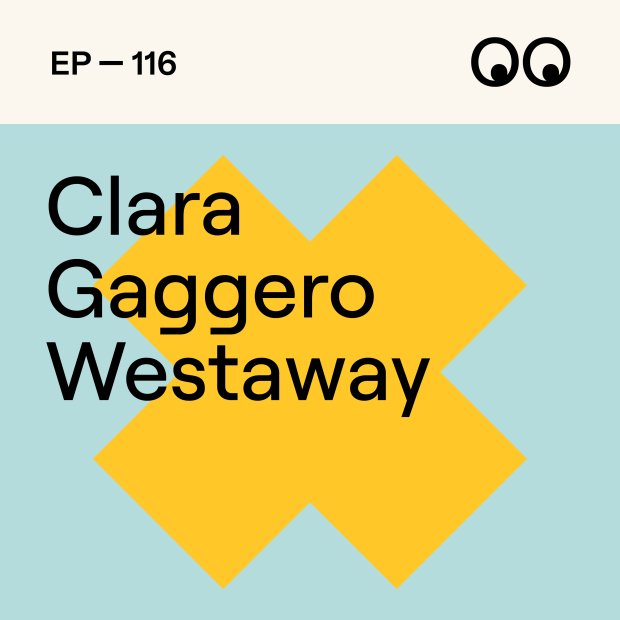Lee Bofkin on how London Mural Festival is bringing communities together
This September, Britain's capital will once more become one giant canvas. We chat with Lee Bofkin, the co-founder of Global Street Art, to find out more.

Who doesn't love a bit of street art? Well, if you can be in London from 5-29 September, you'll be spoiled for choice. Because that's when the celebrated London Mural Festival returns, bringing together artists, communities and visitors to celebrate the capital's diverse people and places through vibrant mural art.
Produced by Global Street Art, the UK's largest mural-painting organisation, the London Mural Festival first took over the capital's streets in 2019, with art appearing in 75 locations in 13 boroughs. Now, four years later, it's back, and this year's edition has the theme of 'Connection'.



Lee Bofkin
This time around, over 2,000 artists from 88 countries worldwide have applied to take part. And festival organisers have secured over 100 mural sites across London, with 50% located within local authority housing estates.
So, we were keen to sit down with Lee Bofkin, the co-founder of Global Street Art and London Mural Festival, to learn more about the event and what to expect from this year's edition.
Unusual origins
Lee's journey to becoming a street art pioneer is unconventional. With a background in breakdancing and a PhD in evolutionary mathematics, he met his co-founder Conrad while working together at a finance company. Conrad's idea to photograph street art around the world set Lee on a path that would change the urban landscape forever.
"I ended up taking 50,000 photos in 25 countries and then building a graffiti taxonomy to classify those images," Lee recalls. "At the same time, people were moving from platforms like Flickr to Instagram, and camera phones were taking off. Street art went from something confined to neighbourhoods to something in your newsfeed daily, making for new fans."



This cultural shift allowed for more large-scale street art to happen, as landlords became more open to having their spaces painted, and artists were eager to take their work outdoors. According to Lee, that's a benefit not just to artists and fans but to society as a whole.
Why street art matters
Lee firmly believes that public art is a public good, and the more of it there is, the more people want it. "It feeds its own legacy," he explains. "When people come to expect it, they'll notice if it's missing. So, at Global Street Art, we want it to be more normalised. That way, young people grow up in an environment of public expression. And that fosters a mindset that not only is this okay, this is expected: 'I can express myself.'"
Murals, he points out, have the power to make people stop in their tracks, which can facilitate repeated interactions and ultimately build a sense of community. "When something is being painted on a wall, people really slow down to watch," he explains. A mural also increases dwell time relative to a blank wall. As soon as you slow people down, especially in housing estates, you encourage people to talk to each other more. That's how they help build community."



That makes working with local communities and housing estates a rewarding process for the festival organisers. But it can, of course, be challenging, too.
"There are lots of approval processes, at both council and residents level," says Lee. But he sees this as less of an annoyance and more of an opportunity. "We treat our housing estate partners just like clients," he stresses. "And so at the end of the project, when it's signed off, everyone feels like it was an achievement, the right thing. That takes real effort and a commitment to the mission. But the reward is immense."
Finding funds
Organising a festival of this scale comes with many other challenges, primarily related to money. "The main challenge is probably resource," he states. "Funding is not easy, nor is it something we're often able to apply for as a commercial organisation. But ultimately, if something isn't sustainable, it doesn't sustain. So, we spend much time raising funds and speaking with brands and developer partners.
"It's genuinely challenging," he adds. "But resource, money, time, and people are all constraints that mean you have to really sweat and absolutely love what you're doing here."



When money is raised, Lee is determined to give local communities the full benefit. For instance, one initiative the festival has implemented is that for every commissioned mural, a portion of the funding goes towards an unfunded mural.
"That means murals happening at sites run by commercial landlords will help murals happen on housing estates," says Lee. "That's really powerful."
Events and collaborations
Along with the murals themselves, the festival will feature a programme of live events, including parties, gigs, artist talks, tours and workshops. These events will bring together artists, communities, visitors, brands and partners to celebrate the power of street art and its connections to the worlds of fashion, music and design.
It also aims to connect artists of different ages, styles and disciplines to work together on special collaborative murals, further emphasising the theme of 'connection'. "We want to create the space where many of the artists that were so good last time can return when possible," Lee explains. "So overall, there will be a mix of established, up-and-coming and relatively new artists."



The curation process, Lee says, involves considering factors such as the neighbourhood, the artist's style, and the scale of the mural. "The curation is about the right space for the right artist. That's the trick of it. It's putting someone in the right neighbourhood where it fits, where it's appropriate, where it brings out the best in that artist," Lee says.
Vision for the future
As the festival approaches, more details on the artist line-up, partners and events will be announced. But Lee's vision for the future extends far beyond this year's edition.
"I want the London Mural Festival to be an integral part of London's cultural landscape," he enthuses. "How amazing would it be if, four years from now, we do 50 week-long festivals in 50 different neighbourhoods and then repeat that every two years?
"What London Mural Festival looks like, the form it takes is open to change," he adds. "What isn't open to change is our mission to live in painted cities and our determination to take that as far as we can before we hand the reins over to the next generation."
With an ambitious vision, a commitment to fostering community connection, and a passion for public art, the London Mural Festival is poised to leave an indelible mark on the city's cultural landscape, one vibrant mural at a time.




















